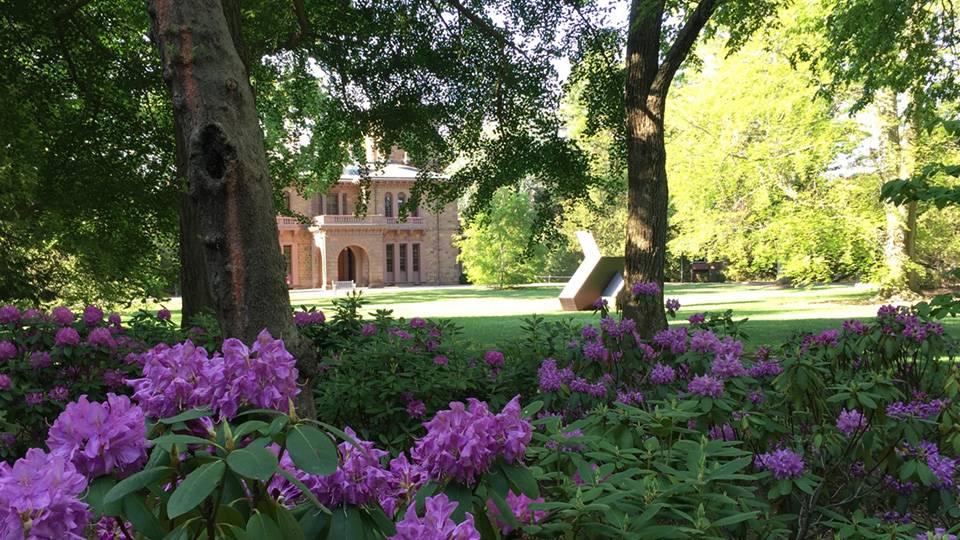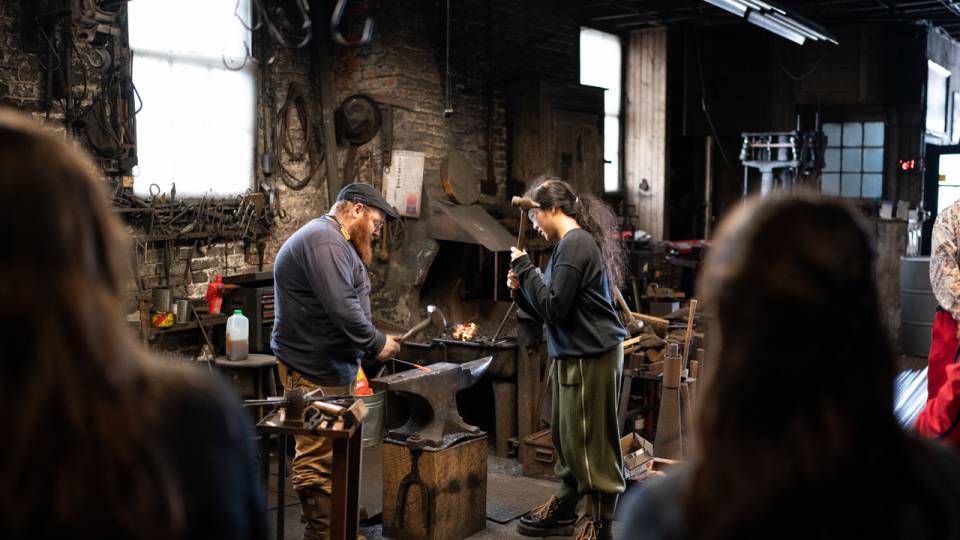Name: Chika Okeke-Agulu
Title: Assistant professor of art and archaeology and African American studies
Scholarly and artistic focus: An art historian and practicing artist from Nigeria who has had more than 35 one-person and group exhibitions around the world, Okeke-Agulu's research focuses on classical, modern and contemporary African and African diaspora art history. He is the co-curator of the exhibition "Life Objects: Rites of Passage in African Art," currently at the Princeton University Art Museum. His most recent book, "Contemporary African Art Since 1980," co-written with art curator and historian Okwui Enwezor, was published this fall.
How did the exhibition "Life Objects: Rites of Passage in African Art" (open until Jan. 24) come about?
After I designed the syllabus for "Art and Lifecycle in Africa," a freshman seminar I am teaching this fall, I approached the museum with a request for a precept show. Normally, this is a modest exhibit designed to allow students to engage more directly and intimately with art objects relevant to the course. As it turned out, the museum enthusiastically supported my plan for a show consisting mostly of important works borrowed from the Smithsonian and from some of the most respected private collections in the Northeast.
You describe the pieces as "life objects." What does that mean?
They are life objects because in their original contexts they were used in important rituals associated with the affirmation of individual and communal life in Africa. Yes, they are undoubtedly powerful art objects; but human lives depended on their efficacy as ritual objects.

This maternity figure in the exhibition is attributed to Areogun, a prolific artist who lived in Nigeria from approximately 1885 to 1954. Made of wood and pigment, it is considered an example of early 20th-century Yorùbá carving. (Photo: Charles Davis)
The 23 pieces come from traditional societies in various parts of Africa over a similar time frame of the mid-19th to early 20th centuries. Putting the pieces together, what is their significance?
A majority of traditional African art in museum collections dates from the late 19th century to the mid-20th century, which coincides with the period of colonization of the continent by European nations. My co-curator Holly Ross [an independent scholar] and I selected objects that represented the best examples of their genre. But the idea was also to include objects from diverse African cultures as a way to emphasize on the one hand the cultural complexity of the continent, and the other the ineluctable link between ritual and art in Africa.
You are an artist yourself. What do you create?
Earlier, I made wood sculpture and mixed media sculptural installations, but I mostly make drawings and paintings that range from intensely political themes during the 1990s, to more personal and even intimate subjects since 1998, when I moved to the U.S. from Nigeria.
You are in your second year at Princeton. How do you combine being an artist and a teacher?
I haven’t done this quite well! Teaching and research in art history leaves me with little time for the studio, but I occasionally steal into my wife’s studio to make a drawing or two. Moreover, I still manage to write poetry. It keeps me sane when I cannot make art.
Another combination is that you are on the faculty of art and archaeology as well as African American studies. What does this connection mean for your work?
Being on the faculty of art and archaeology and the Center for African American Studies makes interdisciplinarity a concrete experience; it suits my own work as an art historian, art critic, independent curator, poet and artist. It is also a natural fit, for it affords me the chance to simultaneously engage with my art history colleagues and with scholars in other branches of the humanities in a meaningful way.
The courses you teach speak to your multifaceted approach, from art and apartheid in South Africa to contemporary African art and, next semester, to the course "Postblack," which looks at race and contemporary African American art. Is there a common thread to these classes?
My teaching reflects diverse perspectives on African and African diaspora art and visual cultures. An underlying thread, however, is the intersection of art and politics and, related to this, the place of art in the discourse on race and postcolonial subjectivity in the United States and Africa. In my classes we begin with the assumption that works of art provide unique views into some of the most complex aspects of human social, cultural and political experience. Thus whether my course topics focus on the traditional arts of Africa, or on modern and contemporary African and African American art, they provide students the opportunity to engage not just with art and its histories, but also with how these reflect, refract or participate in shaping and mapping the human condition.
Okeke-Agulu has a blog at www.chikaokeke-agulu.blogspot.com.

Other objects in the exhibition include a headdress by an Efut artist from the Cross River region of Nigeria and a shield probably made by a Zande artist from north central Africa. (Photos: Bruce White)





